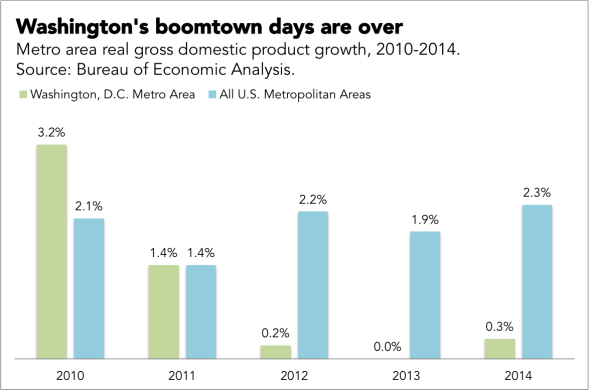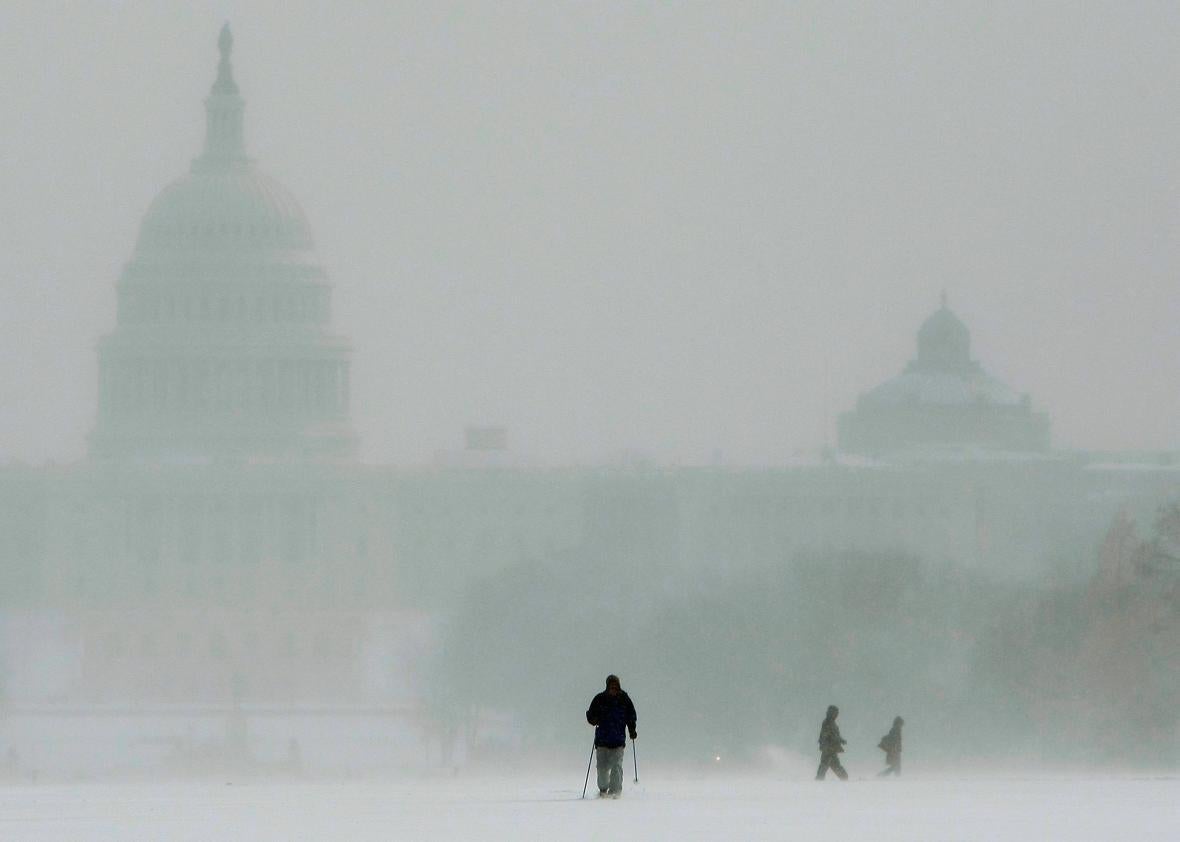Washington, D.C.’s metro area, radiating from the city proper out into the suburbs of Northern Virginia and Maryland, was one of the country’s economic bright spots after the recession, thanks in large part to copious amounts of early Obama-era government spending and all the contractors who built businesses thanks to War on Terror funding. But then came Republican control of the House, budget battles, and sequestration. Pretty soon, writers like Annie Lowrey were wondering whether the new era of fiscal tightfistedness meant the (publicly funded) gold-rush days of D.C. were behind it. Others had faith that the region had diversified away from government and that a little austerity wouldn’t hold back its growth.
But no, it looks like those predicting the party was over were right. According to new Bureau of Economic Analysis figures, the D.C. metro area’s economy expanded a paltry 0.3 percent last year. The silver lining? That was a slight improvement from 2013, when it didn’t grow at all, or 2012, when it inched up just 0.2 percent.

Jordan Weissmann
Growth in the D.C. region has been pretty weak across all industries over recent years, according to the BEA’s figures. But the problems do seem to be emanating from cutbacks in federal civilian and military spending, which have hit the local government-contracting industry.
All that said, even if growth is slow, we’re still talking about a metro area with an enviable 4.5 percent unemployment rate. Meanwhile, in the District itself, average employment has been on a fairly steady upward trajectory since 2009, and the housing market is still hot enough that buyers should probably be at least a little worried about a bubble. So, even if regionwide growth is slowing to a crawl, it’s not exactly as if things are about to return to the bad old days of the early 1990s. The area still has an economy that can support plenty of gastronomically advanced restaurants and cocktail bars, along with as many yoga/CrossFit/Krav Maga/Pure Barre studios as a young urban professional two years out of grad school could ever desire. Even if local GDP figures aren’t blazing hot, there are worse fates.
